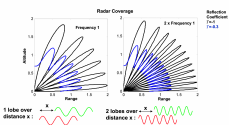If the Type-45 doesn't have an X-band AESA radar, that's even worse from the perspective of providing area air defence eg.
1. Detecting sea-skimming missiles from sea clutter
2. Discriminating against clusters of real missiles or decoy/jamming signals
3. Also detecting small boats
Yes it's problem.
And it looks like every other air-defence ship type has an X-Band radars for fire control?
Fire control and surface search are two different applications. Many if not most ships have an X-band for fire control, which is used for surface targeting with guns and antiship missiles in direct line of sight, some even capable of terminal missile illumination like the Thales STIR. One can say this architecture is ubiquitous enough to be near standard. PLAN ships also have such radars for gunnery and antiship use as standard fitting, even the 054B.
However an FC radar is meant to track a target by continuously staring it keeping the beam on target to produce a fire quality track. It lacks 360 circular coverage that provides situational awareness. That's what a search radar does.
The PLAN ship gives a good study of this architecture as you can see separate surface search Type 364 radar and have separate fire control radars, which are the Type 366, 344 and 347 or 349.
Presumably the existing Type-052D mast (with the Type-364 at the top) could be replaced with an X-Band SPQ-9B equivalent radar?
Type 364 works well enough and PLAN seems satisfied with it. It's likely been internally improved over the years. The radar appears to be working on the higher range of the C-Band.
It's costing the US about $4 Mn for each upgrade, so it does look like it is worth doing, considering the increasing number osihtf s and antiship ea-skimming missiles.
E
---
And if I look at the Sampson and SPQ-9B, they both weigh about 700kg.
Presumably the new dual-face X-Band AESA on the top of the Type-054B is a similar weight?
Could be higher weight due to the double face, plus it might be bigger. Same radar is used on the latest 052D batch which some refer to as 052DG which I will use to refer to it. Externally the mast looks unchanged on the 052DG but it can have unseen internal modifications such as for cooling and wiring.
In theory if an existing 052D should upgrade to this radar, the current mast might be removed as a set. The new mast with the new radar would be installed as a complete set. Think of the ship as built from modular pieces. Should add again, this is in theory.
This same radar is used on the Type 075 and I already mentioned years ago it's going to appear on new ships as the Type 364 replacement.
Time will tell if older 054A and 052C/D will be upgraded to it but the PLAN seems addicted to building new ships from scratch to replace older ones which are relegated to secondary duties as a reserve.


